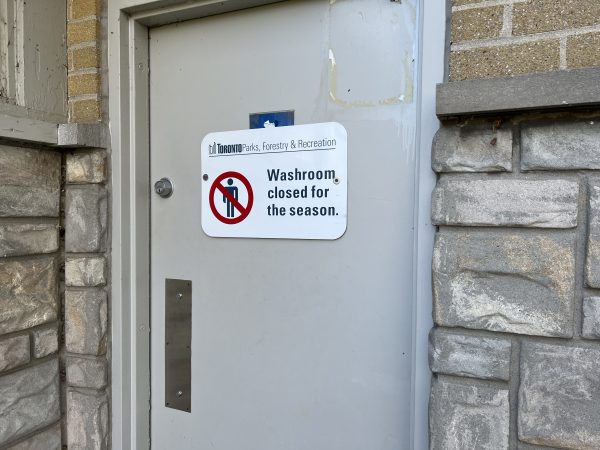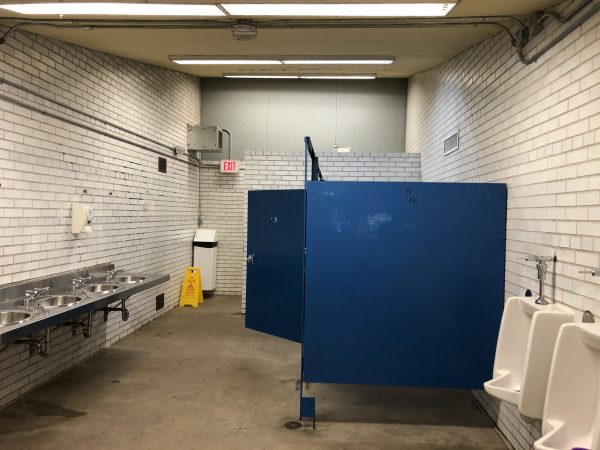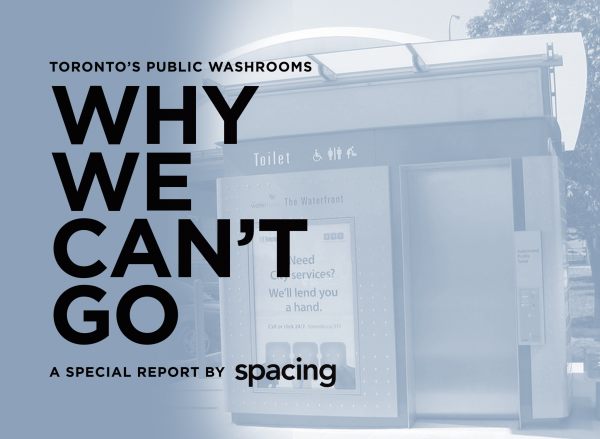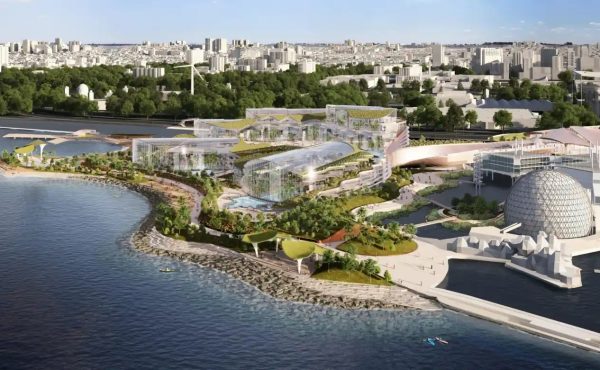Anyone who spends time in cities, and not just Toronto, likely has both a mental map as well as a strategy for finding a place to go, and knowing what to avoid (e.g., bus stations). It might include well-maintained commercial buildings (e.g. the Manulife Centre), certain chains (e.g., McDonald’s, but not Tim’s), large hotels that tend to have conferences, and, of course, civic buildings, like libraries, community centres, etc.
The pandemic not only short-circuited all that urban savvy, but revealed, here at least, that there were no backstops. The public sector had crossed its legs, ostensibly in the name of public health.
Yet the apparent wake-up call about the inadequacy of the city’s public washrooms was well known long before March, 2020, largely through a considerable volume of feedback and analysis gathered by Parks, Forestry and Recreation (PFR) over the course of many years.
Since the early 2000s, PFR has been almost continually examining its own operations and assets, partly as the normal-course self-assessment conducted by a large department, but also in response to the population growth and intensification that has elevated the importance of the city’s recreational amenities. More residents were using parks, signing up for recreational programs, and relying on public spaces because they don’t have access to backyards.

Since the 2004 publication of Our Common Grounds, the City has produced several P&R master plans, public consultations and investment shopping lists, culminating with an “implementation master plan” that was approved in 2019 and extends out to 2038.
The content of this impressive pile of documents ranges widely, needless to say — everything from splash pads to ideas for improving accessibility, and the scope befits a department that likes to wield the slogan, “a city within a park.”
Early on, those documents had very little to say about washrooms. But in the past decade, washrooms are mentioned with increasing frequency, in terms of their opening hours, the maintenance, and their accessibility, as well as a growing recognition that they belong to a broad category of under-maintained capital assets that play an important role in the useability of the city’s parks and recreational spaces.
Consider the contrasts: A survey done for the City’s 2012 “recreational service plan” (2013-2017), noted that “a number of requests were made to make facilities more accessible including accessible washrooms,” but only 3% of respondents flagged this issue.
Yet the 2013-2017 “parks plan,” a kind of sister document, noted that with an aging population, there was “a high demand for amenities like horticulture, community shade, gardens, drinking fountains and washrooms.” That plan called for improved “park maintenance and park amenities such as seating, shade areas and washrooms, with a focus on creating social gathering spaces in parks and trails.”
The results of surveys done in 2012 by PFR to support the parks plan are even more telling. Some excerpts:
- 82% rated the availability of attractive and comfortable city parks as ‘very important.’ Comments identified a need for basic park amenities and emphasized that these must be maintained in good condition.
- Consultation participants made few requests for significant new park features. They did, however, frequently request more benches, as well as more washrooms and improved access to washrooms.
- “9% of all Parks Plan consultation comments cited improving access to park washrooms through extended seasons and longer, more consistent hours of operation”;
- Respondents also noted that “washrooms need to be clean, open and accessible for everyone, including people with disabilities and children.”
FOCUS GROUPS, TOWN HALLS, AND MORE TALK
In 2016-17, PFR had embarked on yet another round of consultations, focus groups and town halls, with an eye to creating the next master plan, which would come into effect in 2019.
This time out, the feedback was even more specific and pointed. Some more quotes:
- Participants at these consultation activities also felt that quality facilities are those that can accommodate a range of activities year-round and have adequate support amenities such as washrooms and lighting;
- Master Plan Website participants expressed a desire for more amenities such as concession stands and washrooms;
- Participants at the Seniors focus group reported that new facilities are great for communities, there is a need for timely repairs at existing facilities, and provided suggestions to improve facilities and outdoor spaces including staff available to help, WiFi in buildings and parks, cable TV in community centres, and more washrooms in parks and trails;
- It was emphasized by many respondents that City facilities need to keep up with growth and demographic change. Some respondents highlighted the need to provide for adequate provision and maintenance of support amenities such as washrooms and support space;
- Some participants mentioned that they had seen declining membership in their sports clubs with people electing to use facilities outside of the city because of maintenance (e.g. holes and debris on fields) and a lack of supporting amenities (e.g. lack of washrooms);
- In response to Question 2, members agreed that the following factors prevented Toronto’s residents from using and enjoying the downtown: A lack of family-friendly spaces (including family-friendly washrooms, nursing stations, and change rooms);
- Some participants flagged a need for more washrooms in parks and trails, particularly in winter;
- Washrooms need to be fully equipped with wheelchair buttons and stalls big enough for a person in a wheelchair to use the bathroom independently.
All this soliciting of public input was part of what eventually became the City’s most ambitious and far-ranging PFR master plan, which was released in 2017, with an implementation strategy adopted in 2019 by city council, in order to guide a generation’s worth of new and re-investment and programming in Toronto’s parks. The scale is significant, with $436 million in capital projects planned just through 2027 (about which more tomorrow).
While the plan acknowledged that “under-sized washrooms and lack of adequate storage spaces, are affecting facility functionality and public perception of the City’s ability to stay ahead of the state of good repair curve,” and further noted that budget restraints don’t absolve PFR of its duties to maintain its assets, there was not a whole lot in the document that reflected the public’s stated desires when it came to washrooms, which are, to state the blindingly obvious point, table stakes in any program meant to encourage residents to be out of doors in non-commercial areas.

Public washrooms that aren’t located in arenas or community centres tend to be lumped into a catch-all category known as field houses or clubhouses. The plan says PFR needs to develop a strategy to ensure these structures are in a state of good repair (SOGR). “Many of these support buildings are aging, not barrier-free and not open to the public — a strategic approach to their maintenance, management, provision and repurposing is required.” (Note the passive construction.)
Yet the authors of the implementation strategy — the document that must see Toronto’s parks, recreational facilities and community centres through not only a generation but a projected increase in the population of 450,000 people — were careful to manage expectations about how SOGR projects, like washrooms, are financed:
Funds raised through development charges or parks levies imposed on new development, it said, “cannot be used to repair or replace existing infrastructure, though upgrades that increase capacity may receive partial funding.”
In the past five years, City officials said in response to questions from Spacing, PFR opened six new washrooms in parks or communities across the city, and has budgeted $11.1 million for SOGR and rehabilitation through 2030. That figure represents 2.5% of the projected spending on new parks and recreation facilities planned for the next five years.
But, as PFR officials also noted, the task of winterizing public bathrooms built, in some cases, over 50 years ago, is mired in complication relating to the lack of insulation, heating and electricity, as if these are immutable obstacles.
Last winter, in response to complaints from the public, the City added 28 winter bathrooms, over the “typical” 17 (to serve a city of 3 million); five more are planned for next winter. During the two pandemic winters, the city also spent about $1 million on portable toilets in 51 “high traffic” locations, as well as in some golf courses, arenas and field houses.
Whether these extended services made much of a difference is debatable, and doesn’t change much during the rest of the calendar year. For the most part, Toronto’s public washrooms are open from May to October, from about 9am to dusk — whether or not there are people in the park, as has been the case for literally generations.
photos by Shawn Micallef




